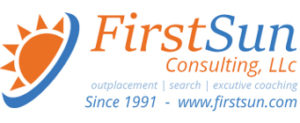Great Read & Share: 8 HR Predictions For 2020.
Entering a new decade, in the midst of a global technology revolution, business leaders recognize that the driving force behind every innovation has been human(s): employees who believed in the organization’s vision and were empowered to do the best work of their lives.
In 2020, organizations will need to create positive employee experiences that make employees feel valued, appreciated, and energized to invest their entire selves in the workplace. When employees experience higher levels of humanity at work, they perform better, are more likely to exert extra effort at their jobs, and are less likely to quit.
These eight HR predictions – validated by some of the world’s sharpest thought leaders – offer insights to help companies position their employees and themselves for success in 2020 and beyond.
Employers will ensure workplace rights for all employees.
In the 2019 Deloitte Global Human Capital Trends report, CEOs cited “impact on society, including income equality, diversity, and the environment” as the most important measure of an organization’s success.
Additionally, 181 CEOs signed the Business Roundtable’s statement, redefining a public corporation’s primary purpose, from existing to benefit shareholders to existing to serve all their stakeholders – employees, customers, suppliers, and the community as well as shareholders. These statements represent a step in the right direction for workplace rights.
Like this Article ? Share It ! You now can easily enjoy/follow/share Today our Award Winning Articles/Blogs with Now Over 2.5 Million Growing Participates Worldwide in our various Social Media formats below:
LinkedIn: https://www.linkedin.com/in/chris-g-laughter-b46389198/
Facebook: http://www.facebook.com/pages/First-Sun-Consulting-LLC-Outplacement-Services/213542315355343?sk=wall
Twitter: Follow us @ firstsunllc
Best Daily Choice: Follow the Best of FSC Career Articles/Blogs @
https://twitter.com/search?q=bestoffscblog&src=typeahead_click
Question: Want the ‘the best/current articles/blogs on the web’ on Job Search, Resume, Advancing/Changing your Career, or simply Managing People?
Answer: Simply go to our FSC Career Blog below & type(#career, #leadership, #life) in Blog Search: https://www.firstsun.com/fsc-career-blog/
What Skill Sets do You have to be ‘Sharpened’ ?
Continue of the article:
Corporate social responsibility will be a business imperative.
Whether inspired by social pressure or self-interest, leading companies are adopting a moral case for their role in the betterment of society. They have listened to the arguments, often made by employees and customers, that their responsibilities go beyond the bottom line.
Modern employees have deep concern and passion for making the world a better place for themselves, their children, and future generations. Activism is incredibly important to them, and they care deeply about doing meaningful work for a responsible organization whose values align with theirs. Because of this, companies are shifting away from the traditional approach to people’s strategies and focusing more on employee recognition and creating a culture that helps unite their employees in working toward shared goals.
“Employee experience” will expand and elevate to “human experience.”
More than ever, the strength of a company’s financial performance will depend on its ability to win the hearts and minds of every employee.
Shawn Achor, founder and CEO, GoodThink, sees an opportunity for companies to adapt to the stress of change by deepening social bonds, practicing gratitude, and identifying meaning in the stress. “Together, we can actually create more happiness and connection even amid change. Think how strongly people bond in boot camp or in combat, or how friendships deepen when people overcome hard times together. In good times, happiness is a luxury item, but in challenging times it becomes a necessity if we want to see our full potential.”
Christine Porath, Ph.D., associate professor at Georgetown University’s McDonough School of Business, agrees. “It’s in leaders’ and organizations’ best interest to create workplaces where people can thrive. Organizations are starting to separate themselves by being known for their culture.”
Susan Cain, co-founder, and CEO of Quiet Revolution and best-selling author, says, “I predict that the movement toward a more humanistic work culture will only accelerate. Based on my conversations with various companies in different sectors during my travels, I see a near-universal acknowledgment of the importance of psychology and psychological safety.”
Nataly Kogan, founder, Happier Inc. and Happier @ Work, concurs. “More and more leaders and companies will make creating a culture of gratitude, kindness, and psychological safety a strategic priority in 2020.”
Kat Cole, COO, and president, FOCUS Brands, says, “In 2020, companies that win are the ones that connect the real-life needs of humans who are customers to the humans at work. The customer-employee connection is more important than ever. Customers care more about how employees are treated and the employee/employer brand than ever before.”
Employers and employees will share accountability for engagement and productivity.
Cy Wakeman, international keynote speaker and New York Times best-selling author, says, “Shared accountability will be the name of the game in 2020. Employers will need to work to create empowering and engaging workplaces and employees will need to bring their most evolved selves to work – willing, able, and ready to work to meet the challenges at hand full-on.”
Josh Bersin, global industry analyst and dean, says, “As companies become more service-driven and networked, organizations are going through one of the biggest changes in structure and management in decades. The biggest challenge for 2020 is going to be ‘driving productivity at work’ – not just focusing on employee engagement, growth, and culture, but helping people and leaders learn how to ‘get things done.’”
Flexibility will help retain and attract great employees.
Adam Grant, Ph.D., Wharton professor and best-selling author, also predicts more flexibility in when and how employees will be able to work. “I’m anticipating three trends that make work more human – the rise of the four-day work week and the six-hour workday, more companies offering returnships for parents transitioning back into the workforce, and the growth of job-sharing, where two people can work part time in one role.”
Ozan Varol, best-selling author, says the 9-to-5 workday and the five-day work week are both arbitrary benchmarks. “Most businesses continue to operate under this structure, not because it leads to more productive employees (it doesn’t), but because it happens to be the status quo. In 2020, I expect that more businesses will experiment with flexible schedules and shorter workdays and weeks, which boost the productivity, happiness, and well-being of employees.”
Data and analytics will become even more important strategic tools.
Gabrielle Thompson, Cisco’s SVP of Acquisitions and Total Rewards, says “the consolidation and predictive analytics using data throughout the organization, crossing functional boundaries, will drive more thought-provoking conversations about current and future talent.”
Jason Averbook , Leapgen CEO and cofounder, says, “Data will be crucial for all in HR to ensure they are delivering experiences to the workforce that matter as well as finally crossing the chasm, delivering insights that show the impact that talent tools are making on the business.”
The widespread use of misinformation in politics could spread to the workplace.
Daniel Pink, author of WHEN and DRIVE, fears that “the assault on truth we’re seeing in politics — from peddling demonstrably false conspiracy theories to labeling a free press the ‘enemy of the people’ — could begin to infiltrate the workplace. If people feel free to call anything they disagree with ‘fake news,’ what happens to the integrity of financial statements, performance reviews, resumes, and so on?”
More companies will encourage employees to invest in colleagues’ success.
Michelle Gielan, best-selling author, says, “In an era of increasing stress and hyper-competition at work, professionals focused on their own high performance and supporting colleagues will win out in 2020 and beyond. Our research shows those investing in the success of others versus merely their own are 40% more likely to receive a promotion over the next year. Additionally, strengthening relationships at work fuels engagement and well-being. Social connection is the biggest predictor of happiness in life. Understanding how to meaningfully invest in others will be an important competitive advantage during this next decade.”
Forbes.com | December 23, 2019 | Eric Mosley









